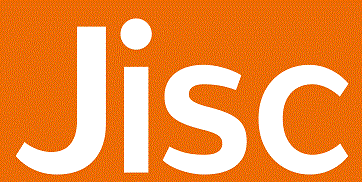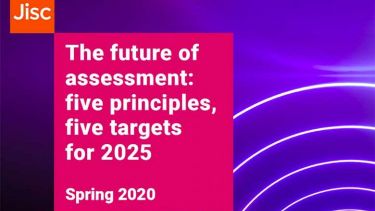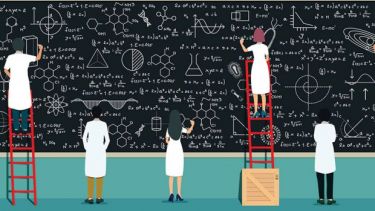
Source:
iStock

New and expanded services for university libraries are making it easier for academics to discover and use collections online
Now more than ever, there is a demand for universities to make available content in digital form from archives and collections that include books, primary sources and multimedia material. However, the cost of this type of digital transformation is considerable.
To make the job easier, Jisc, the UK education and research technology solutions not-for-profit, is bringing together libraries, publishers and academic institutions to make digital collections more accessible.
It’s part of Jisc’s role to broker the bulk purchase of collections for universities, pushing down prices and enabling its members to access these resources. Responding to libraries’ requirements, the digital archival collections group purchasing scheme, which offers over 90 products from eight publishers, leverages institutions’ collective purchasing power and helps libraries save money, especially for the mid-tier universities. Jisc has also created guidelines, in collaboration with members, to support libraries in their own negotiations with publishers when purchasing digital archives.
Among recent initiative is a partnership with global publisher Wiley to digitise up to 1 million pages as part of a new digital collection on the history of science, and a pilot programme with digital library JSTOR to make it easier for scholars to discover existing digital collections.
“We wanted to look at new ways for libraries to digitise or gain access to collections,” says Paola Marchionni, Jisc’s head of digital resources for teaching, learning and research. “It is very costly and libraries’ budgets are taken up by subscriptions to journals and acquiring books. Primary sources or archival materials are now very important in the scholarly communication workflow.”
Fiona Courage, associate director and curator of the Mass Observation Archive at the University of Sussex, says that digital archiving projects are “especially important to democratise archives and use digital technology to widen access to them”.
Courage, who is also chair of Jisc’s Digital Archival Collections advisory group, adds: “If we embark on these digitisation projects, they can be made available in such a way that they can serve a wider purpose than the immediate project. They can have sustainability and longevity, and people can continue using them into the future.”
Sustainability is also central to digital archiving projects. As part of the 1 million pages project, Wiley will digitise select collections which have been proposed for inclusion by UK university libraries, who have free access to the final digital archive. Wiley will be able to sell the digital archive to institutions in other countries, with Jisc receiving a royalty. “The royalties from the rest-of-the-world sales will allow us to provide these resources for free to all UK Jisc members, a model which helps ensure future sustainability,” says Marchionni. And after a decade from publication, c the collection becomes open and authentication/password-free globally.
“Ten years sounds like a long time,” she says, but for this type of collections it’s not, as based on current publishing models “content is locked out in perpetuity behind paywalls, unless institutions have the money to purchase”.
Raising awareness of digital archives and where they are located is another challenge; there are many that few people know exist. Collections, especially those which have been digitised by institutions or as part of research projects, are sometimes hosted only on university websites and are not easily found. Jisc’s pilot project with digital library JSTOR on Open Community Collections aims to rectify this, as the organisations work together to support the discovery of digitised collections.
Once archives are accessible, the ability to search primary sources as well as journal articles creates new ways of studying historical materials, says Jon Topham, a senior lecturer at University of Leeds. Topham uses the UK Medical Heritage Library digitised collection on Jisc’s Historical Texts service.
“Once you start to get a systemically assembled data set like this, you can begin to ask new questions,” he says. “From the point of view of the humanities, [digitising collections and expanding access to existing ones] is one of the most important things Jisc could do.”
Covid-19 has highlighted another reason that digital archives are so important: without them, many scholars are unable to do their research.
“Under lockdown, access to resources becomes all the more important,” says Topham. “My students are tearing their hair out because they can’t get access to all their secondary sources, many of which are books that were written in the 1980s. But thanks to the historical texts service, they are able to read primary sources, some of which are centuries old.”
During the pandemic “it is even more important for us to get access to digital content”, says Marchionni. “Research relies on going to libraries, searching archives and finding books that are out of print. If this situation continues, it will become even more important to find ways to serve this content in a digital way.”
Find out more about Jisc.
This article was commissioned by Times Higher Education in partnership with Jisc, the UK body for digital technology and resources in higher education, further education, skills and research.
















